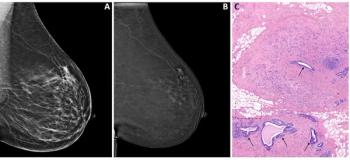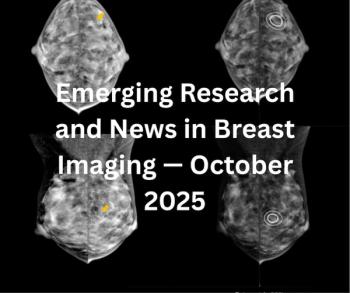
Buyers hear warning of digital mammography interoperability
Interest in digital mammography was strong on the 2005 RSNA exhibit floor, driven at least in part by positive results from the Digital Mammographic Imaging Screening Trial, whose results were announced 10 weeks prior to the start of the meeting. A few doors down from the prospective buyers crowding exhibitor booths, however, early adopters of the equipment were sounding an alarm.
Interest in digital mammography was strong on the 2005 RSNA exhibit floor, driven at least in part by positive results from the Digital Mammographic Imaging Screening Trial, whose results were announced 10 weeks prior to the start of the meeting. A few doors down from the prospective buyers crowding exhibitor booths, however, early adopters of the equipment were sounding an alarm.
The various pieces of equipment, while all digital in nature, work differently and, consequently, generate images that look different, according to members of a mammography task force assembled as part of the Integrating the Healthcare Enterprise initiative. Differences in image display can make it difficult and time-consuming to compare mammograms of the same patient if the patient was examined on more than one system, said Dr. Margarita Zuley, who represented the task force at the RSNA meeting.
"Patients move around, and we are incredibly dependent on prior images," she said. "If prior images were taken on the equipment of a different vendor, we may not be able to read them. With the number of machines (coming into use) and cross-platform incompatibilities, we will have lot of unhappy people at the RSNA meeting next year."
The meeting, held by the IHE mammography working group, drew vendors, breast imaging specialists, and regulatory officials. The IHE group stressed the urgent need for interoperability, advising vendors to speed up their work on this issue to avoid major problems that will be exacerbated with mainstream use.
"When rank-and-file radiologists put these systems into their practices, these problems will rear their ugly heads," said Dr. Etta Pisano, a member of the IHE group, chief of breast imaging at the University of North Carolina in Chapel Hill, and lead investigator of DMIST. "We have had the honeymoon period with digital mammography, and we are about to have the real work period. This will affect everyday radiologists, not just academic geeks like us."
Results from DMIST have raised expectations about digital mammography. The study, published in the Sept. 16 issue of The New England Journal of Medicine, found that digital mammography was significantly more accurate than film mammography when screening for breast cancer in three groups: women under age 50, those who have radiographically dense breasts, and those who are pre- or perimenopausal (DI SCAN 9/26/05). The authors of the study recommended the use of digital mammography for women in these groups.
Rising interest in the digital modality could boost an already booming adoption curve. The number of accredited units has risen by more than 70% in the last year, up from 722 in November 2004 to 885 in May 2005 and 1089 in November 2005. The number of accredited facilities with digital mammography units rose from 631 to 775 in the last year.
Prospective buyers are probably unaware of the potential problems, Zuley said, but they will discover them when they start to use digital mammography systems. Problems might be mitigated, however, if vendors act quickly.
The task force has drafted a list of immediate concerns that will be published for comment early in 2006 and finalized by May. The task force encouraged vendors to begin working on interoperability problems now, however, and to demonstrate progress on these issues at a meeting planned for April at Stanford University.
Vendors attending the meeting voiced concern that progress might not be possible by April. Some were also reluctant to participate in a demonstration of systems to users in April, as such a demonstration would pit vendors against each other unnecessarily.
Members of the task force insisted there is no time to waste, given the escalating demand for digital mammography systems. That sentiment was echoed by the senior director of the American College of Radiology's breast imaging accreditation program, Priscilla Butler.
"We strongly support this (initiative), given the difficulty of connecting systems," she said. "We encourage everyone to move forward as quickly as possible."
Newsletter
Stay at the forefront of radiology with the Diagnostic Imaging newsletter, delivering the latest news, clinical insights, and imaging advancements for today’s radiologists.





























